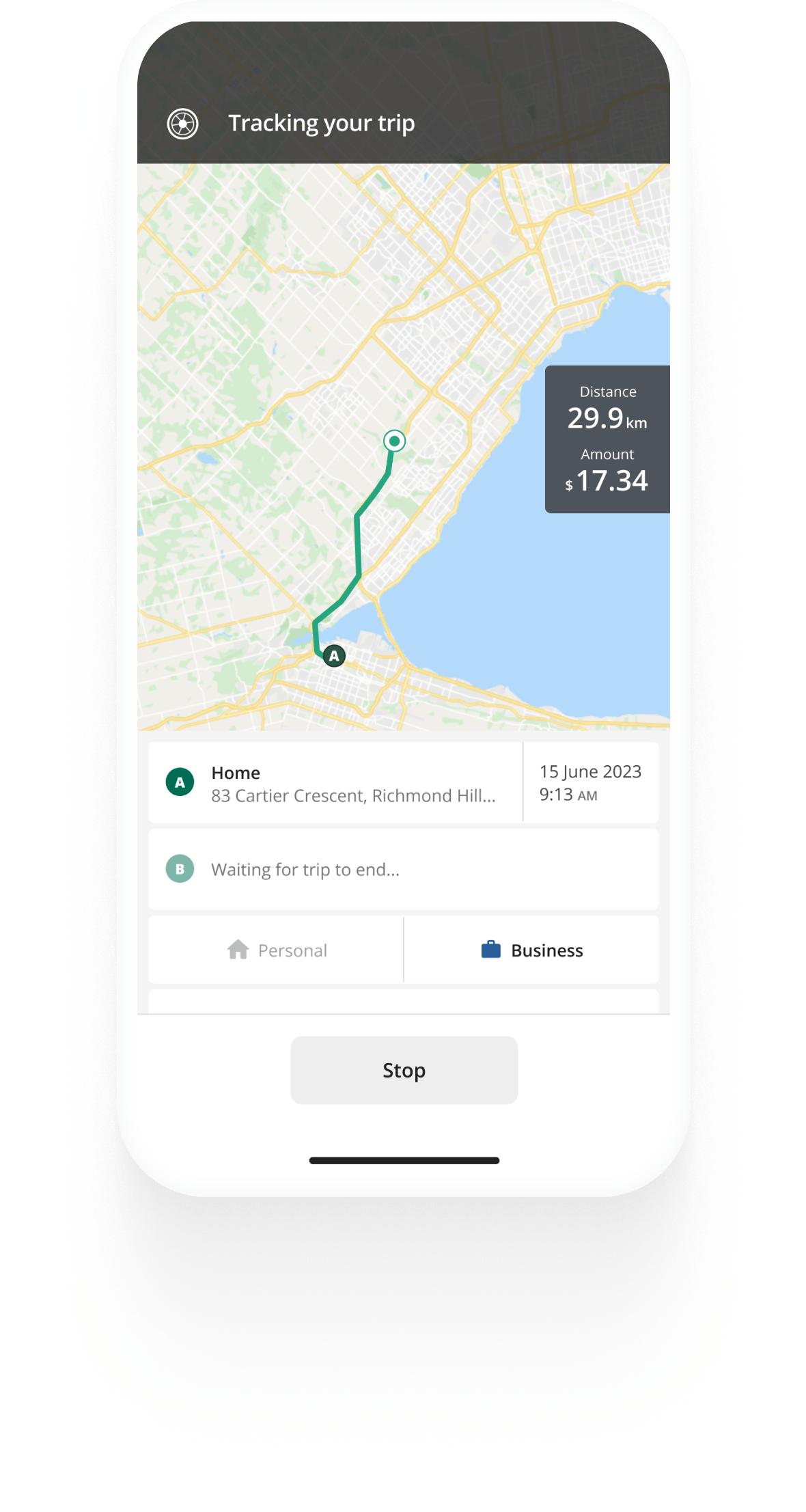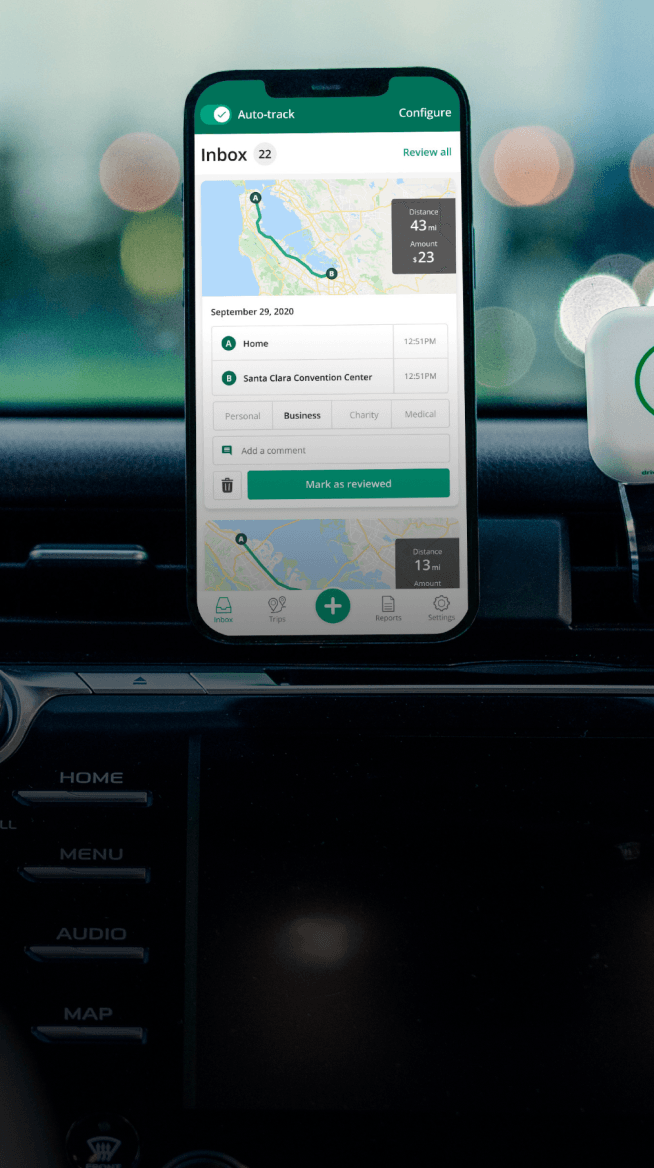Track mileage automatically
Get started.svg)
Medical Travel in Canada
If you need to receive medical care, you may be able to deduct medical travel expenses for your medical mileage. The deductions can represent a big chunk of savings that you can claim at tax time. Here’s an overview of the rules for claiming medical travel from the CRA.
CRA rules on medical travel
Firstly, you will need proof that you attended the medical service you needed. You can provide receipts for the services you’ve received or a document or letter signed by the provider of the medical service.
You cannot claim medical travel expenses if you travelled less than 40 kilometres in one direction to receive medical attention.
If you travelled more than 40, but less than 80 kilometres one way, you will be able to claim medical travel, and if you travelled more than 80 kilometres, you will be able to claim mileage, as well as accommodation, meal and parking costs.
You will also be able to claim travel expenses if you had to receive medical care outside of Canada.
If a medical practitioner certifies that you needed to be accompanied to receive medical attention, you will be able to claim the expenses of the attendant.
You will only be able to claim medical expenses for which you have not, and will not be reimbursed. If medical reimbursement has been included in your income (ergo, it will be taxed) you will be able to claim your medical travel expenses.


Track business driving with ease
Trusted by millions of drivers
Automate your logbook Automate your logbook

Automatic mileage tracking and CRA-compliant reporting.
Get started for free Get started for freeMedical travel if you travel more than 40 kilometres
You will be able to claim medical travel from the CRA such as bus, train and taxi fares, and vehicle mileage (if public transportation is not readily available) if you meet the following conditions:
- You were not able to receive the needed medical care near your home
- You took a reasonable and direct route
- It was reasonable for you to travel to a farther destination in order to receive medical attention.
You can claim medical mileage from the CRA by the detailed or simplified method.
If you use the detailed method, you need to keep all receipts of your medical travel expenses in order to claim them. You are able to deduct all qualified public transport fares, and if you travel with your vehicle - all costs of operating and owning it. These include fuel, oil, insurance, maintenance, depreciation and more.
With the simplified method, you will be able to claim a flat medical mileage rate and you won’t need to keep detailed records. However, the CRA may still ask you to provide documentation to support your medical mileage claim, so we recommend keeping a logbook of your medical travel.
Medical travel over 80 kilometres in Canada and abroad
If you need to travel more than 80 kilometres in order to receive medical care, you will be able to claim medical expenses such as bus, train and taxi fares, vehicle mileage (if public transportation is not readily available), meals, parking and accommodation if you meet the following conditions:
- You were not able to receive the needed medical care near your home
- You took a reasonable and direct route
- It was reasonable for you to travel to a farther destination in order to receive medical attention.
Again, you can claim medical travel and other expenses by the detailed or simplified method.
The detailed method of claiming medical travel and other expenses requires you to keep all receipts of your accrued expenses, such as for travel, parking (if applicable), meals and accommodation.
The simplified method lets you use a medical mileage rate and a per-meal rate for your expenses. Keep receipts of your accommodation costs, as there are no flat rates. While you don’t need to keep detailed receipts for medical travel and meals, the CRA may ask for documentation to support your mileage expenses claim.
Medical travel rates 2024
If you claim medical travel with the flat per-kilometre medical rate, note that there are different rates for each Canadian territory.
| Province or territory | Medical travel rate 2024 |
| Alberta | 54.5 |
| British Columbia | 57.5 |
| Manitoba | 54.5 |
| New Brunswick | 58.5 |
| Newfoundland and Labrador | 60.5 |
| Northwest Territories | 70.0 |
| Nova Scotia | 59.5 |
| Nunavut | 70.5 |
| Ontario | 60.5 |
| Prince Edward Island | 57.5 |
| Quebec | 58.0 |
| Saskatchewan | 55.0 |
| Yukon | 71.5 |
Use the medical travel rates above to claim your medical travel expenses for 2024.
CRA Medical travel rates 2023
| Province or territory | Medical travel rate 2023 |
| Alberta | 53.0 |
| British Columbia | 56.5 |
| Manitoba | 54.5 |
| New Brunswick | 57.5 |
| Newfoundland and Labrador | 59.0 |
| Northwest Territories | 70.5 |
| Nova Scotia | 58.0 |
| Nunavut | 67.5 |
| Ontario | 59.0 |
| Prince Edward Island | 56.0 |
| Quebec | 57.5 |
| Saskatchewan | 52.5 |
| Yukon | 70.5 |
Are you claiming work-related mileage besides medical travel expenses? See our CRA mileage guide for all the rules on mileage reimbursement and deductions in Canada.
FAQ

Tired of logging mileage by hand?
Effortless. CRA-compliant. Liberating.
Top posts
- Mileage Calculator Canada
- Self-Employed Tax Deductions you Should Claim in Canada
- Free CRA Mileage Log Template
Related posts
CRA Mileage Rate 2024
Latest update: February 20, 2024 - 2 min read
The CRA announces 2024 rates for vehicle allowance: From January 1st, 2024, per kilometre rates will increase 2 cents over 2023.
Mileage Calculator Canada
Latest update: October 27, 2025 - 2 min read
Choose a CRA per-kilometre rate or enter your own. Simply enter how many km you drove to calculate your allowance or deduction.
Self-Employed Tax Deductions you Should Claim in Canada
Latest update: October 22, 2025 - 2 min read
See a list of common tax deductions for self-employed individuals in Canada and how to claim them at tax time to maximize your tax savings.


.svg)